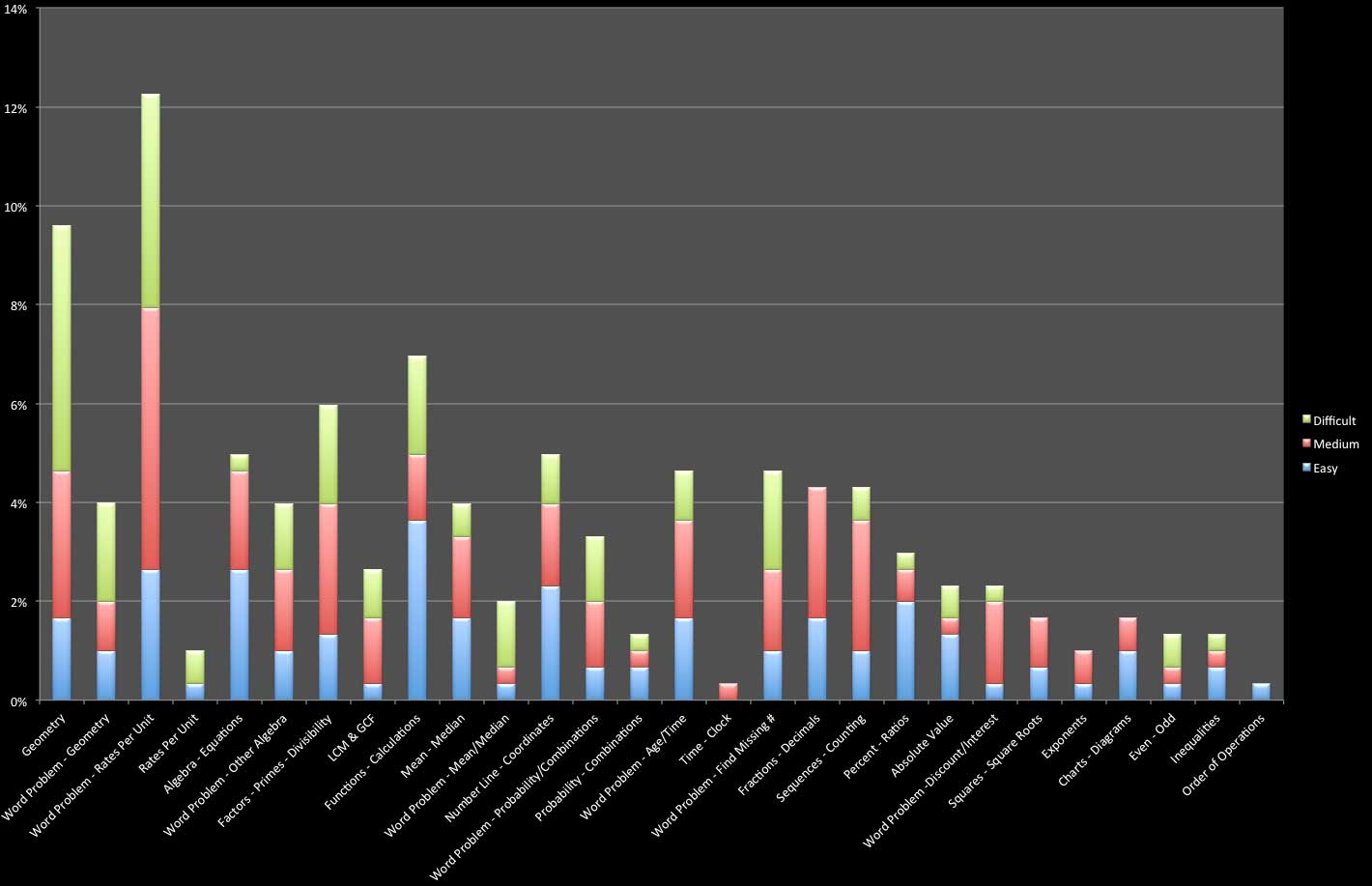
FREQUENCY DISTRIBUTION OF QUESTIONS BY CATEGORY

SHSAT Results by Category and Difficulty
All the exams and problem set questions are organized for subscribers to practice by question category much like practice drills which are organized by lesson and question category. An easy link to “Diagnostic” reports from the By Category tab allows students to track their site wide performance in each question category and both quickly and objectively identify weaknesses and strengths. Perhaps even better, the subscriber and tutoring course will take the mystery out of the training process and provide the training in essential skills for the SHSAT then in each question category and ultimately on your final exam results.
The above chart reflects the results of thousands of SHSAT Handbook exams organized by question category and difficulty level and the following outlines some of those details. The categories include approximately 30 question categories. That means they are designed to reflect the actual question types historically presented on the SHSAT exam and not necessarily just the skills required for the exam. In most cases the SHSAT exam is different than other exams students confront in the classroom because it requires students to manipulate two or more skills to solve any one question. For example, a single geometry question may require understanding of similar triangles, interior angles of a polygon, and how to determine areas of circles in order to solve. That is why some question categories that are also individual skills like order of operations, exponents, and more appear less frequently. Few questions isolate only that skill and no others. Although not shown here, our subscriber and tutoring structured courses will begin building student knowledge with over 60+ math skills that come into play for the various question categories presented above. The category results above are further divided into difficulty; “Easy” means the average % correct for a given question is greater than 75%, “Medium” includes a % correct range greater than 55% and less than or equal to 75% while “Difficult” includes questions answered correctly by only 55% or less of test takers. Furthermore, questions may or may not be presented in word problem format on the SHSAT even for the same category so the attribute is indicated in the category name when appropriate. Note Geometry questions appear in both formats so there are both Geometry and Word Problems – Geometry categories.
Many might find the chart useful to gain insights about the SHSAT and strategies for study. We will highlight only a couple observations herein. First, note that word problem formats account for anywhere from about 3/8 to 1/2 the SHSAT exam. They cover a few question categories more frequently and students tend to perform worse on the word problems as indicated by the larger fraction of green bars. Another substantial, but difficult category is Geometry where the green bars also indicate students frequently perform worse. These two observations probably only confirm what is generally thought to be true that word problems and geometry are critical for the SHSAT. A student must master the ability to translate phrases into algebraic statements and equations as well as master the various related theorems covered in geometry. Feel free to take a look and see if any other conclusions come to mind. Whether you follow the structured course or set your own study plan, TestPrepSHSAT.com tries to make your preparation more efficient and effective and organizing exams and reports by question categories is just one way to make that possible.
